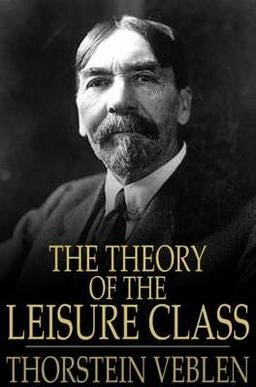Social Status & Watch Collecting - Part 2
How Opinions and Beliefs Have Become the New Status Symbols
“The best measure of cultural capital is undoubtedly the amount of time devoted to acquiring it.”
Pierre Bourdieu in The Forms of Capital
In Part 1, we examined how status games influence our behaviour as collectors. This time, we will look at how this concept transcends our possessions and infiltrates our very belief systems. Do you think that beliefs can confer status? Does this, in turn, inflict an unseen cost on lower social classes? How can we course-correct?
Estimated reading time: ~12 minutes
Evolution of Status Signals
I once watched a talk by Rob Henderson at Nudgestock - the behavioural science festival - and it crystallised something I’ve observed in watch collecting circles. Henderson, has a fairly unusual perspective on life – from foster care to the US Air Force to Yale & Cambridge – and with that background was able to see both angles on status (low and high status). With that in mind, he introduced a concept called “luxury beliefs” which of course, can explain many dynamics in our hobby.
But before we dive into Henderson’s insights, let us establish some historical context.
In 1899, the economist and sociologist Thorstein Veblen published a book called The Theory of the Leisure Class. The book was based on three articles that Veblen published in the American Journal of Sociology between 1898 and 18991.
In this book, he introduced the idea that since we can’t directly know others’ financial status, we rely on visible signals – specifically, whether people can afford expensive goods and leisure activities - and this will give us a good indication of their means. Of course, this easily explains why it is difficult (and expensive) to obtain anything which might be used as a status-signalling tool e.g. a Nautilus.
Back in Veblen’s era, status was displayed through elaborate clothing and leisure pursuits that only non-labourers could enjoy. As Henderson explained, Veblen even observed that servants themselves served as status symbols, writing: “The chief use of servants is the evidence they afford of the master’s ability to pay.” Make no mistake, this is something which we continue to observe in watch collecting today i.e. the conversion of economic capital into cultural capital.
Cultural Capital
Fast forward to 1979, and French sociologist Pierre Bourdieu expanded on these thoughts in his book Distinction: A Social Critique of the Judgment of Taste. Bourdieu proposed that people with “cultural capital” - education, intellect, speech patterns and dress sense - actively shape what constitutes “good taste” in society. In fact, Bourdieu and Jean-Claude Passeron coined and defined the term cultural capital in the essay "Cultural Reproduction and Social Reproduction" a few years before, in 1977.
Perhaps along similar lines of thought to Maslow, Bourdieu suggested that once our basic physical and material needs were met, people could spend more time cultivating the “dispositions of mind and body” by displaying distinctive tastes and habits. This then ends up creating an entire secondary “status economy” which goes far beyond the usual financial wealth.
In watch collecting, this line of reasoning explains why owning expensive watches isn’t enough. Peak status tends to arise when people demonstrate deep knowledge about movements, can differentiate between various hand-finishing techniques, can recognise the heritage of certain references, can explain how different parts of a mechanical watch function, and so on. The ability to get into the nitty-gritty of collecting, and of watches themselves, represents a form of cultural capital which often matters more than the economic capital required to purchase them in the first place.





